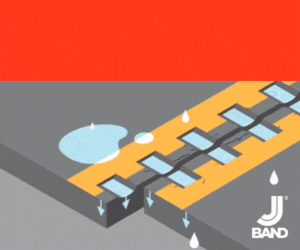 This blog entry comes from my ongoing experience. I am in the middle of some home repairs, including having new shingles installed – in Kentucky, during a cold winter.
This blog entry comes from my ongoing experience. I am in the middle of some home repairs, including having new shingles installed – in Kentucky, during a cold winter.
I’d never really thought much about putting on a roof in the winter; it was just not done, in my experience. Well, sometimes it is. Here are some of the things I’ve learned.
First, make sure that the contractor follows the shingle manufacturer’s guidelines. The manufacturer knows what is needed to get optimal performance life. I bought “30-year shingles” and I want them to last.
Asphalt shingles are best installed when it is warm, calm and dry – not typical winter conditions and certainly not what my contractor has had to work with here.
“Warm” generally means 40 degrees F or more, preferably warmer. Asphalt shingles can become brittle in cold temperatures and may crack or break. Another potential concern is that the self-sealing strips on the underside of the shingle will not seal if it is cold. Interestingly, I found some cautionary wording about avoiding installing shingles above 85 degrees F. At elevated temperatures, the shingles can soften and lose granules, sort of like scuffing of tender mixes in newly placed parking lots. That problem was not a consideration for my job.
“Calm” means wind is not a factor. High winds can lift the shingles before they have a chance to lie flat and seal. On the NRCA (National Roofing Contractors Association) website, I found the following:
“Hand-tabbing (the application of quarter-size dabs of adhesive to the underside of shingles) is recommended if the building is located in an area prone to high winds. This will help prevent the shingles from blowing off the roof until warmer weather arrives and the sealing strips can set properly.”
I did not find a number to define “high winds,” but on another website, I read one bit of advice to not work in high winds. Their reasoning was that both the roofers and the shingles could blow off the structure. Yeah, if it can blow a man off the roof that’s not going to be a good time to install shingles.
“Dry” is pretty much self-explanatory. Roofs are supposed to keep the water out of houses, so proceed accordingly. One thing I learned made me feel a bit better about my job. The underlayment (or “tar-paper,” as it is commonly called, although it is asphalt rather than tar) does not have to be covered with shingles immediately. It needs to be kept intact, free of wrinkles, buckling, or tears. Good practice is to place the shingles as soon as possible, but the underlayment can withstand rain and moderate winds. (Good thing; some of mine got a little snow, followed by brief heavy rain.)
It is possible to get a good new shingle roof job in the winter. It just takes a little planning and work.













